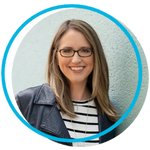
A common misunderstanding in the workplace that we see often is this idea that the best team members just “have the answers.” That you can count on them to solve problems quickly and be decisive.
Don’t get me wrong . . . there is value in those things, of course. But this can also perpetuate working in isolation and cause others to defer to the same team members again and again. And then there’s the shadow side of this idea: that if you don’t have the answer at all times, you are somehow less effective.
False.
A premature level of certainty is the opposite of curiosity. And to be clear, getting curious doesn’t mean “my first instinct is wrong” or “I should never follow my gut.” It might actually further solidify your initial choice, or it could open the door to new ideas and innovation—both of which are productive. That said, the value of leveraging curiosity as a pathway to productivity isn’t always well-understood. In fact, a common refrain used to minimize curiosity is by saying you’re “trying to delay work by exploring possibility.”
Also false.
Let’s unpack the value proposition of curiosity a bit more and discuss a few strategies for incorporating more of it into your work (and life).
Curiosity-First Tips
Sometimes, we hear leaders say something to the effect of, “Don’t come to me with questions; come with solutions.” I understand that inclination, especially if their approach to that point has been that they need to “reign things in” on the team or otherwise exert power over a person or group, whether that power is actual or perceived.
Instead of power over, what if we shift to power with? That is where curiosity comes into play. Stepping back and allowing—or, better yet, seeking out—questions and exploration can improve our outcomes. And even if it doesn’t, there is immense value in having a power with approach and including more voices in the decision making process.
- Try questions only. This is just as it sounds . . . set aside exploratory time to simply ask questions about the project or task at hand and discuss. There is a real link between this application of curiosity and innovation. By putting things on the table and considering them differently, we could land on what we initially thought . . . or we might discover a whole new solution, system, or way of working together.
- Say it out loud. Curiosity is a jumping-off point to connection. Outcome notwithstanding, by centering curiosity as you make decisions, you will also learn a lot about how others on your team think, what they value, how they process information, etc. That’s why speaking up is so important. If questions or tension are present in the room, they’re there whether you say them out loud or not. Talking through ideas in a group can help uncover and undo avoidant tendencies, reducing misunderstandings and “meetings after the meetings.”
- Don’t overestimate how long this will take. Taking time to be curious doesn’t have to slow progress. Those underlying questions and concerns that can be unpacked with curious questions are present whether you talk about them or not; why not try putting the cards on the table next time?
What’s Next?
Try some of these curious questions the next time you need to make a decision, or use one of your own:
- What decision making process did we use last time, and what did we learn?
- What’s available to us now that wasn’t before?
- How do the proposed decisions align with our values?
- What would someone who has a different skillset or mindset say about this?
- Do we need additional support?
- What might we be missing?
Remember, our gut reactions are very informed by the past, and curiosity is very informed by the present, the future, and the possibility of understanding the past better. What an invaluable tool.
What role does curiosity play in your workplace? Any strategies that work for you that we should add to our list? I’d love to hear about and learn from your experiences.
Sarah Noll Wilson is on a mission to help leaders build and rebuild teams. She aims to empower leaders to understand and honor the beautiful complexity of the humans they serve. Through her work as an Executive Coach, an in-demand Keynote Speaker, Researcher, Contributor to Harvard Business Review, and Bestselling Author of “Don’t Feed the Elephants”, Sarah helps leaders close the gap between what they intend to do and the actual impact they make. She hosts the podcast “Conversations on Conversations”, is certified in Co-Active Coaching and Conversational Intelligence, and is a frequent guest lecturer at universities. In addition to her work with organizations, Sarah is a passionate advocate for mental health.


